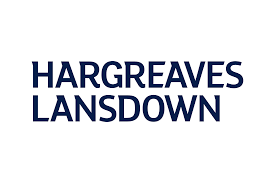The subject of pension savings is something we should all consider well before retirement hits us. The earlier you start saving for your pension, the more significant your accumulated pension contributions and the greater the potential capital appreciation. While much will depend upon the standard of living you can realistically afford, there are some useful indicators about the level of pension savings required.
Maximise your retirement fund with our panel of pension providers. Click on your chosen provider to get started!
What is the average cost of living in retirement?
A recent survey by the Which? magazine cast a very interesting light on the cost of living in retirement. The survey looked at essential, comfortable and luxury lifestyles both for single retirees and couples. The findings were as follows:
| Scenario | Essential lifestyle | Comfortable lifestyle | Luxurious lifestyle |
| Single retiree | £13,000 | £19,000 | £30,000 |
| Retired couple | £17,000 | £25,000 | £40,000 |
Source: Which? Magazine
The survey took into account an array of living expenses such as groceries, insurance, transport, housing costs and much more. There were additional areas of expenditure for those looking at a comfortable lifestyle and a luxurious lifestyle.
This will give you a rough idea of the kind of income you will need to maintain an array of different lifestyles in retirement.
How much does the average pensioner have in savings?
Due to changes in pension regulations, there are now three main options when it comes to creating an income stream from your pension fund:
- Annuity purchase
- Drawdown
- Fully withdrawn
Using data from the Financial Conduct Authority website (covering the tax year 2018/19) we know the average pension pot size for different scenarios:
- Funds used to purchase an annuity - £61,000
- Pension funds entering drawdown for the first time - £147,500
- Fully withdrawn pension pots - £13,000
There is a significant difference between pension fund drawdown, where you are in control of investments and drawdown payments, and annuity purchase. Once you purchase an annuity with your pension fund, you are locked into a guaranteed annual taxable income. This will vary significantly depending on your circumstances.
Current annuity rates
Using information from the UK government Pension Wise service, the following information will give you a guide as to current annuity rates.
Scenario one
If you used a £100,000 pension pot to purchase a single life non-escalating annuity, this would guarantee £3600 a year for the rest of your life. This equates to an annuity rate of 3.6% with a retirement age of 55.
Scenario two
If you purchased a single life non-escalating annuity, retiring at 65, this would attract a rate of 4.8%. So, if you invested £100,000 into the annuity, you would receive £4800 a year for the rest of your life.
The situation is very different when it comes to pension fund drawdown. Assuming you have taken your tax-free element (currently 25%), future pension payments will be classed as taxable income. However, the funds remaining in your pension fund may achieve further long-term capital growth, depending on how they are invested. Compare this with an annuity purchase, where your funds are invested with an annuity provider in exchange for fixed regular income.
The building blocks of your retirement income
While we tend to focus on defined benefit and defined contribution pension schemes, you also need to consider your state pension. As personal pension drawdown schemes tend to be more popular today, we will put aside annuity policies when looking at the building blocks of your retirement income.
State pension
It is essential to check your entitlement to the state pension, which may differ depending on when you were born and your level of national insurance contributions. The new state pension offers a maximum of £175.20 per week per person. This equates to £18,220 per annum for a retired couple.
Due to different personal circumstances, not everybody will be entitled to a full new state pension. The average has been estimated at around £16,262 for a retired couple which goes a long way to covering costs for an essential lifestyle.
Defined benefit pension schemes
For many companies and public bodies, defined benefit pension schemes have become unaffordable. Often referred to as final salary schemes, they offer a guaranteed pension based upon your final salary and years of service.
The basic accrual rate is 1/60 per year of continuous service. For example, if you worked for the same company for 40 years, you would be entitled to 40/60 of your final salary. We have provided some examples of annual pension entitlement below:
| Final salary | 10 Years Service | 20 Years Service | 30 Years Service | 40 Years Service |
| £20,000 | £3,333 | £6,666 | £10,000 | £13,333 |
| £30,000 | £5,000 | £10,000 | £15,000 | £20,000 |
| £40,000 | £6,666 | £13,333 | £20,000 | £26,666 |
| £50,000 | £8,333 | £16,666 | £25,000 | £33,333 |
This perfectly illustrates the benefits of a defined benefit pension scheme – especially for one employer employees!
Money purchase pension schemes
There are so many different variables to consider when it comes to money purchase (drawdown) pension schemes. We have put together a table of required pension fund pots to pay for pension withdrawals across several different scenarios.
To calculate the required pension fund pot, we have assumed the following variables:
- Life expectancy 81 years
- Investment return of 3.5% per annum on retained funds
| Retirement age | £10,000 p.a | £20,000 p.a. | £30,000 p.a. | £40,000 p.a. | £50,000 p.a. |
| 55 | £170,000 | £340,000 | £510,000 | £680,000 | £850,000 |
| 60 | £150,000 | £300,000 | £450,000 | £600,000 | £750,000 |
| 65 | £120,000 | £250,000 | £370,000 | £500,000 | £620,000 |
Calculator: Pensions and Savings
While annuity rates have fallen significantly in recent years, it is also important to remember the potential volatility if you take the drawdown option. Obviously, this will depend upon your individual investment policy. However, in theory, this should be more conservative as you approach retirement. This ensures you can protect your funds to a certain extent.
To calculate your income in retirement (ignoring savings and investments), you need to consider your state pension entitlement, together with any of the following:
- Pension drawdown
- Final salary pension
- Annuity payments
It may well be that the comfortable/luxurious lifestyle you dreamed of could well be in your grasp - with some long-term pension planning.
Starting early is the key to pension fund appreciation
While there are certain circumstances in which you can continue to make contributions to your pension fund in retirement, it is vital to take advice in these scenarios. The main concept of pension planning is to start early. This not only allows you to build up your fund over a prolonged period but also offers the potential for greater long-term capital appreciation.
Using the above information, you should be able to plan for a particular level of retirement income. Whether you have a final salary pension scheme, drawdown plan or an annuity, it is also essential to consider your state pension. Due to the current setup, the triple lock guarantee, the basic state pension should increase by at least 2.5% per annum.







